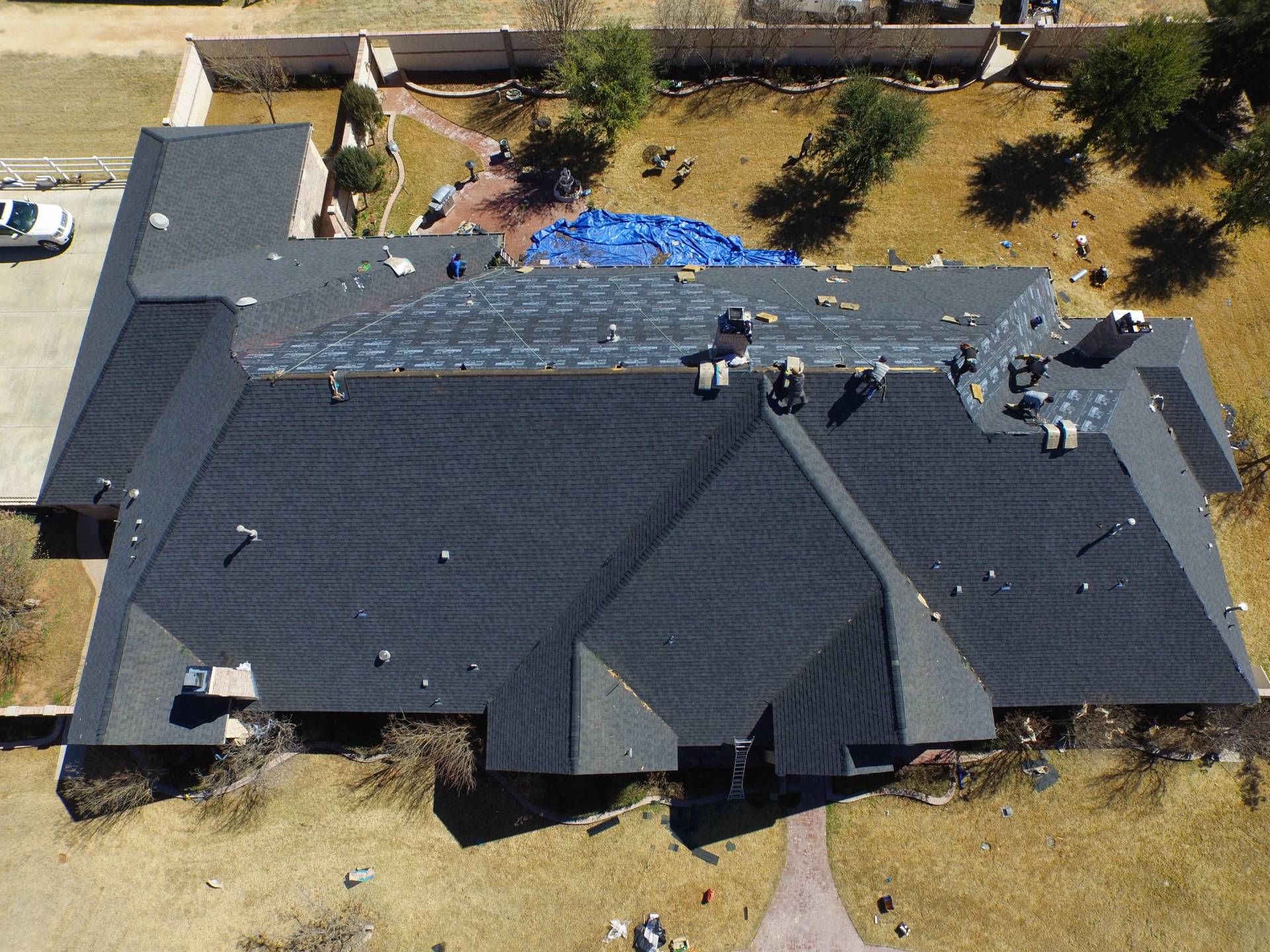As a company specializing in reroofing, we see a lot of improperly ventilated roofs. This often occurs because the original home builder was not a roofing expert and overlooked ventilation when constructing the home. Sometimes, especially in Texas, homes are reroofed multiple times by the same homeowner, and people ask roofing companies to install additional ventilation, assuming more is better. The roofing company obliges because they do not know any difference or do not care. Before we discuss a few common ventilation mistakes, we must understand the importance of properly ventilating a roof.
Ventilation is needed to circulate air throughout the home. The attic space is no different. Warm (or hot), moist air stagnating in an attic can create various problems: condensation, shingle granule loss, and increased utility bills. Air must be constantly moving through the attic space to avoid these problems. Air comes in through an intake (usually soffit vents around the home’s eaves), enters the attic, rises to the top of the attic, and is expelled out of the home through roof vents. This constant airflow will keep your home’s temperature more consistent and prolong the life of your roof.
Common Roofing Ventilation Mistake #1: Blocked Intake Vents
Air can’t enter the attic space if the intake vents are blocked. We often see attic insulation or other dirt and debris covering the small holes in the soffit vents. If you walk around the perimeter of your home and see your soffit vents are clogged, your home may not be ventilating properly. The solution can be as simple as cleaning the soffit vents from under the eave or as difficult as removing attic insulation from clogging the vents inside the attic. If the intake is blocked, the ventilation on your roof will not achieve its purpose.
Common Roofing Ventilation Mistake #2: Active Ventilation Not Operating Properly
Active roof vents move to create suction to expel air from the attic. There are two common types: power attic fans and turbines. Power attic fans are motor-driven and have a thermostat that will turn on a fan when the attic reaches a certain temperature. The fan will begin to spin, sucking hot air out of a hole in the roof covered by the vent shell. Often, the thermostat is faulty, the motor has failed, or the wiring is bad and the fan never operates. This problem is usually neglected because people see the power attic fan and assume they have working ventilation.
Roof turbines are the spinning mushroom-looking vents on the roof. These vents are getting increasingly rare, but they are still out there, especially on older homes. As the wind blows, these turbines spin, creating a suction that pulls hot air out of the attic. The problem with turbines is that sometimes they don’t spin! Dents in the fins and rust are the usual culprits. You probably have an issue if your turbines never seem to spin. The best solution is to remove them, deck over the holes, and install a ridge vent instead. If you don’t want ridge vent, removing the turbines and replacing with low-profile box vents is another option, although more box vents will be needed to achieve the same square footage of ventilation.
Common Roofing Ventilation Mistake #3: Mixing Exhaust Ventilation Products on the Rooftop
This may be the most common mistake. An example: a home has box vents and is getting reroofed. The customer hears about ridge vent, likes its look, and asks the roofer to install it. The roofer installs ridge vent a few feet above the box vents. More ventilation is better right? Not exactly. This can mess up the airflow because one product could begin working as an intake and exhaust at the same time, only ventilating the area immediately under it. Or the ridge vent may only exhaust the air near it that is coming in through the box vent, leaving the hot attic air remaining in the attic. It’s best to stick with one type of ventilation product and ensure there is enough of that product to achieve a net-free ventilating area (NFVA; there is a formula for this to be discussed in another blog).
IMPORTANT NOTE: Most new construction uses open-cell foam to insulate homes. This foam adheres to walls and the underside of the roof decking. This is not the pink fiberglass rolls or the blow-in insulation. Open-cell foam insulation encapsulates the walls and attic space of the home, making rooftop ventilation unnecessary. If your home was built in the last 10 years and has no roof vents, it’s probably insulated with foam. A quick internet search will show you how this looks.
AT HUF Construction, our roofing specialists know what to look for to ensure your roof is ventilating properly. For more information or to discuss your specific roof repair needs, message us or give us a call.
HUF Construction is a Waxahachie, TX-based construction company that serves Ellis County, the Dallas/Ft. Worth Metroplex, central Texas, has a second location in the Permian Basin. We have handled thousands of insurance claims across multiple states and understand the claims process inside and out. While the majority of our business is roofing and handling insurance claims, we have recently expanded into swimming pool construction in the Dallas/Ft. Worth area. If you have an insurance claim, or a roofing need, contact us today.

